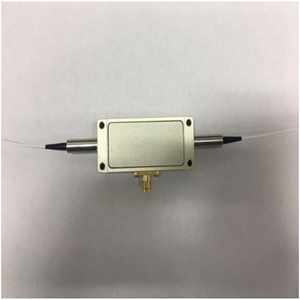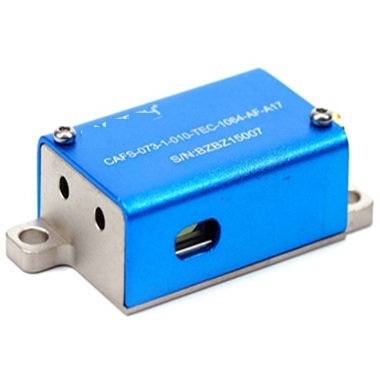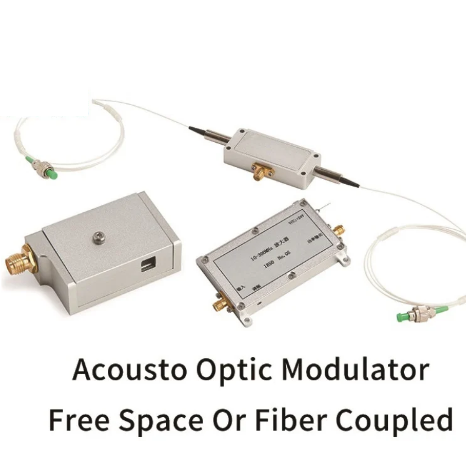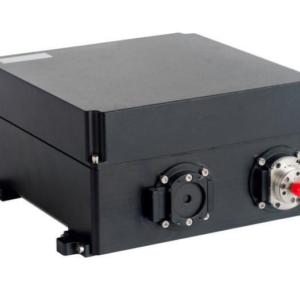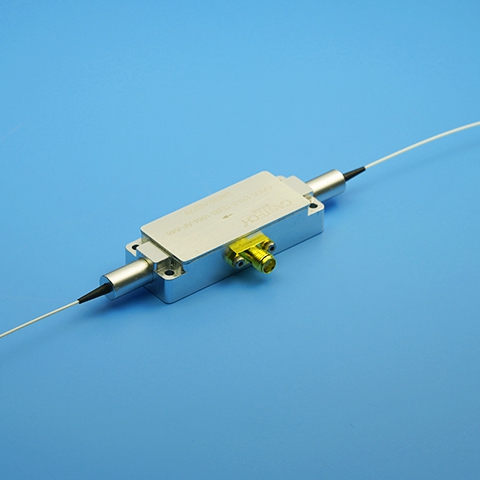Description
1550nm 80MHz Acousto-optic Frequency Shifter
Key performance
Low insertion loss
compact
Stable performance
| parameter | Unit | Min | Max | conventional |
| material | TeO2 | |||
| wavelength | nm | 1520 | 1580 | 1550 |
| Average optical power | KW | 0.5 | ||
| Peak (pulse) optical power | kW | 0.5 | ||
| Ultrasonic sound velocity | m/s | 4200 | ||
| Insertion loss | dB | 3 | 2 | |
| Extinction Ratio | dB | 50 | ||
| Return loss | dB | 40 | ||
| Rising time | ns | 55 | 45 | |
| frequency | MHz | 80 | ||
| Frequency shift | MHz | +/-80 | ||
| RF power | W | 2 | ||
| Voltage standing wave ratio | 1.5:1 | |||
| input resistance | Ω | 50 | ||
| Device interface | SMA | |||
| Fiber type | Single mode | |||
| Fiber optic interface | FC/APC | |||
|
Fiber length |
m | 1.5 | ||
| Operating temperature | ℃ | -20~+60 | ||
| storage temperature | ℃ | -30~+70 |
When light is diffracted at the traveling refractive index grating in an acousto-optic modulator, the diffracted light experiences a shift of optical frequency which is plus or minus the acoustic (or drive) frequency. That effect (which can be interpreted as a Doppler shift) is exploited in acousto-optic frequency shifters.
Drive frequencies are typically between some tens and hundreds of megahertz, rarely more than 1 GHz. The resulting change of optical wavelength is quite small. For larger frequency shifts, or for realizing very small frequency shifts (e.g. only a few MHz), one may cascade two or more devices. It is also possible to use a double pass through a single device in order to obtain twice the frequency shift.
Frequency shifters may either be operated with a fixed drive frequency, generating a fixed optical frequency offset, or with a variable drive frequency. In the latter case, one needs to consider the fact that the beam direction will change with the drive frequency; if that is detrimental, one may use methods to minimize such effects. It is also possible to operate a frequency shifter with several drive frequencies at the same time.
The optical input beam is typically a laser beam from a single-frequency laser. However, a frequency shifter would also work with a multimode beam, if its bandwidth is not too large.
Most acousto-optic frequency shifters are bulk devices, but there are also compact fiber-coupled versions (fiber-pigtailed AOFS). Light from the input fiber is first collimated, then sent through the modulator crystal and finally focused into the output fiber. There are also all-fiber frequency shifters (perhaps not commercially available) where the frequency shift is created within an optical fiber.
Transmission through an acousto-optic (AO) device causes the input light to experience a frequency shift equal to the RF drive frequency. Our acousto-optic frequency shifters (AOFS) are optimized for the needs of applications like interferometry, with the ability to achieve high extinction ratio between modes.
